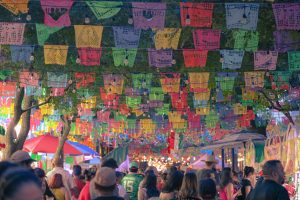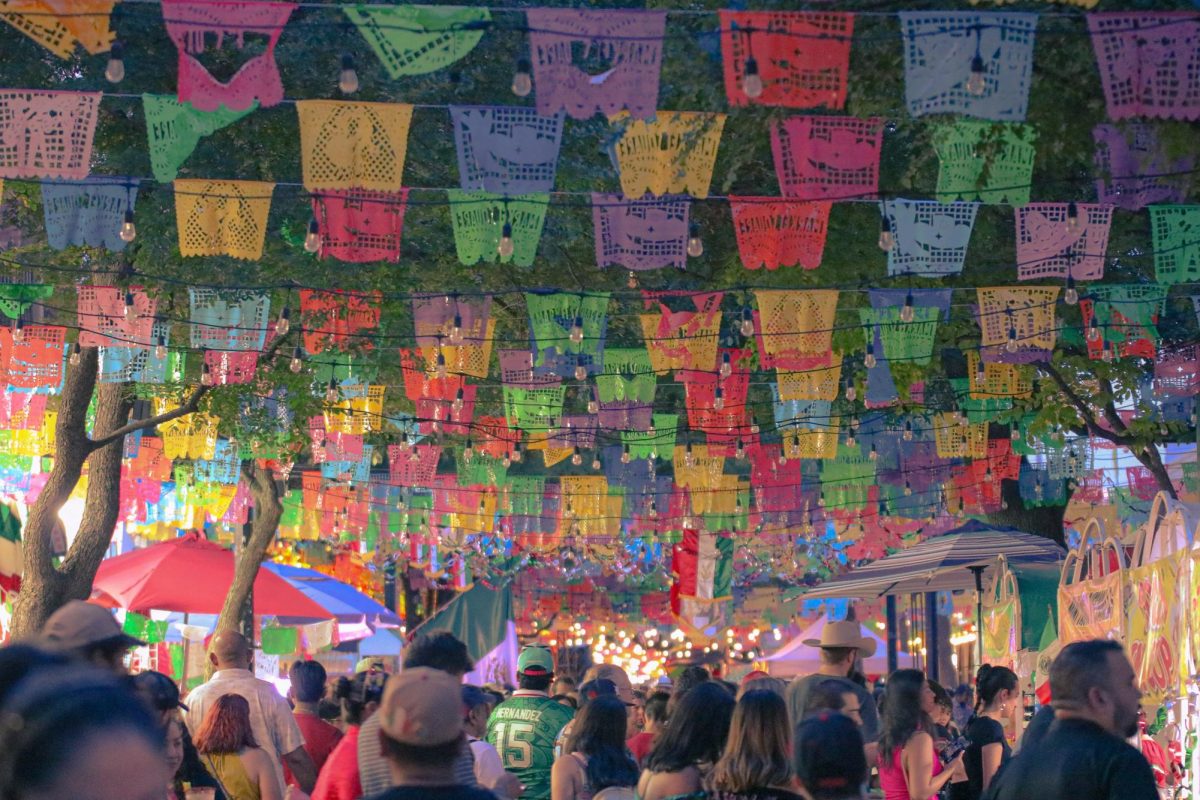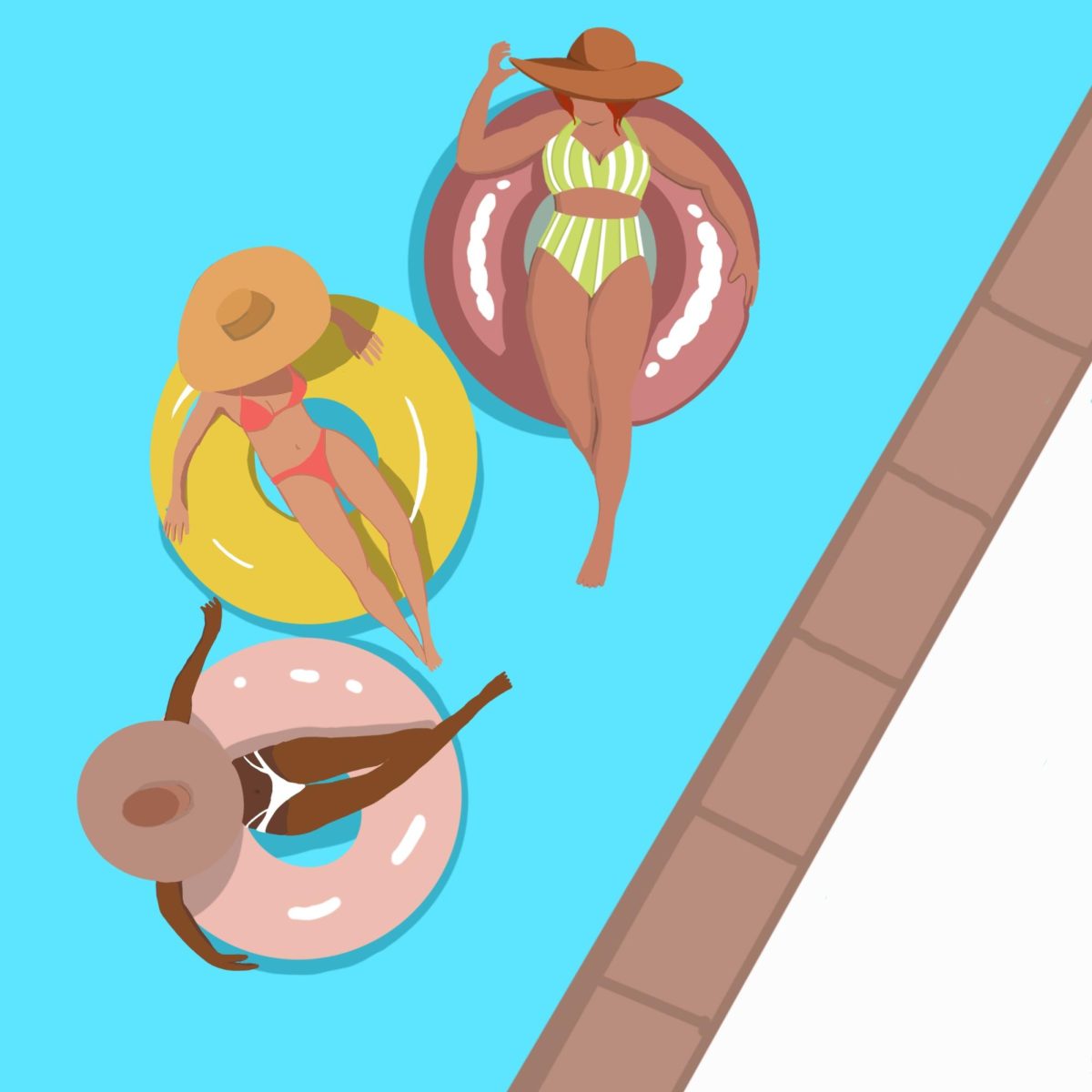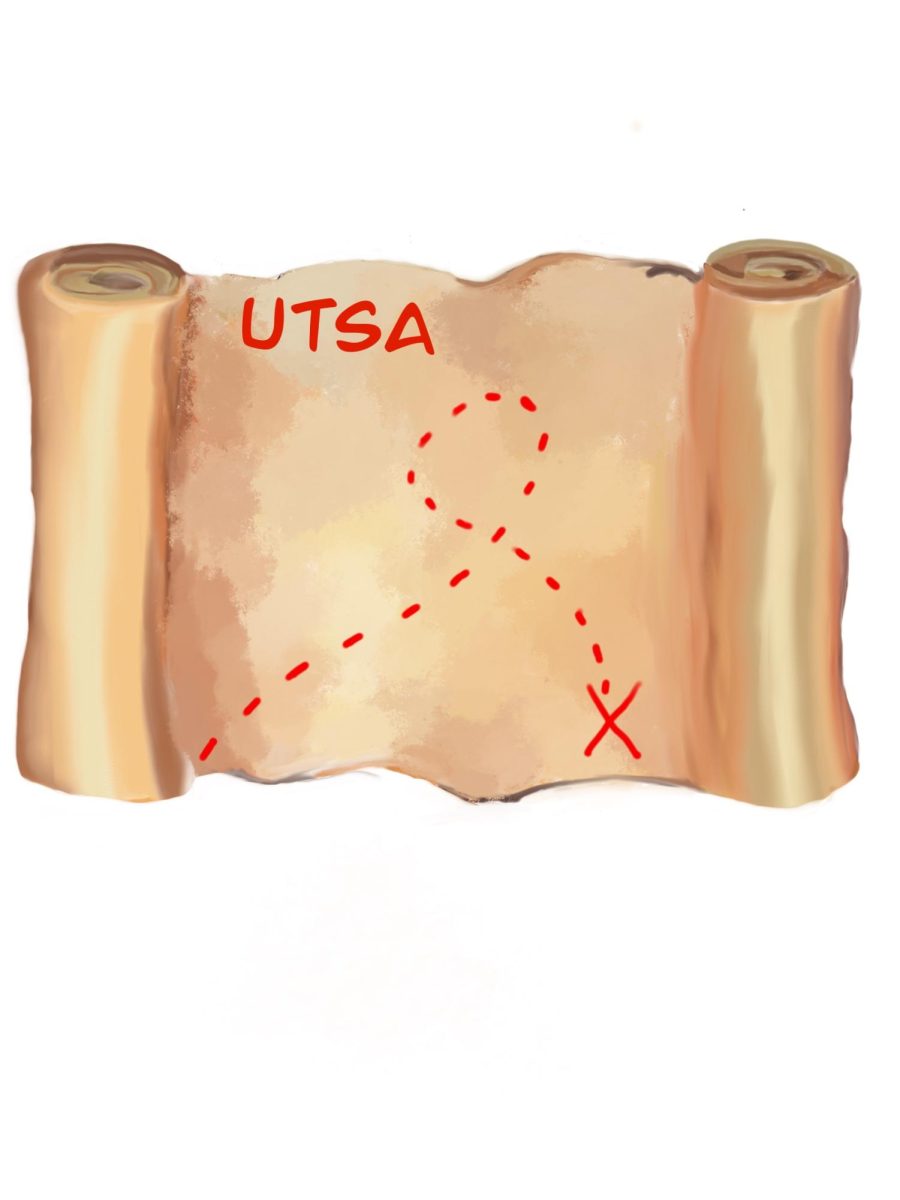
This month the UTSA Art Gallery is featuring an exhibit tilted “Tal Palo Tal Astilla,” which seeks to represent a cultural theme based on the Mexico-United States border and influence on it’s citizens.
The exhibit features three talented artists, Ana Fernandez, Rigoberto Gonzalez and Laura Anderson Barbata and is curated by UTSA professor Ricky Cuauhyollotzin Anthony Armendariz.
“Families [tend to] use catch phrases to teach lessons,” Armendariz says. “Then when they become older, they become part of the way you pass on culture.”
The entrance, which Barbata created herself, features a bright orange crepe paper river, creating a physical and mental sense of crossing a border into a realm of real life border culture.
“It creates a physical border that [one] must overcome,” Armendariz explains. “Once beyond the border, there are more parallels than differences. I wanted to raise awareness of the similarities.”
Barbata’s work draws inspiration from spiritually charged religious icons, historical text of indigenous origins and personal narratives.
“At the exhibition, analytical works explore our colonial past and history,” Barbata says. “I want to explore issues of justice and to understand the past that comprises my rich Mexican heritage.”
Armendariz agrees that Barbata’s work “is all passion [and] about the animalness in us.”
The majority of her work embodies a headless theme. “As I explored religions that shaped our past, I decided to remove their heads to liberate them from the readings that we can impose on them,” Barbata says.
“Gonzalez’s work is a contrast to Barbata’s but counterbalances Barbata’s,” Armendariz explained. Gonzalez has a mix of political and contemporary subjects and complex visual vocabulary with old master sensibility.
The pieces shown “depict scenes of violence, torture, beheadings and shootings,” Gonzalez said. “The paintings are informed by the visual idioms of 16th century Baroque art.”
His piece “Autoretrato (Self-portrait)” grasps immediate attention, as it is the only one with an actual complete figure of a human being.
“I try to draw an allusion between the act of painting and prayer. For example, the gesture of the hand resembles the way I hold the brush, and it can also be interpreted as such. There is also the symbolism implied in the darkness surrounding me and the positive connotation of the light emanating from a candle,” Gonzalez explained.
One work of interest features a graphic goat head and pan dulce with an exposed brain that expresses Mexican culture in an eye-catching way.
“In most of my work, I try to address social issues such as immigration, culture, the war on drugs and other issues that need to be brought to people’s attention with an artistic sensibility,” Gonzalez said.
Fernandez’s work is technically different from the other artists. She has a “looseness and her process is different technically on how the paint is laid down,” Armendariz stated.
Ana Fernandez paints symbolic and mystically poetic portraits of inanimate objects, such as homes and vehicles, which serve as surrogates for their owners. They are regionally specific but broadly appealing.
The pieces that Fernandez showcased in the exhibit represent still-life with a story. “She does composites of dwellings in San Antonio and reinterprets them to make them false narratives,” Armendariz says. “It’s a contemporary subject matter.”
“Tal Palo Tal Astilla – Artists Influenced by La Cultura” will be displayed at UTSA’s Art Gallery at the main campus through March 1.











